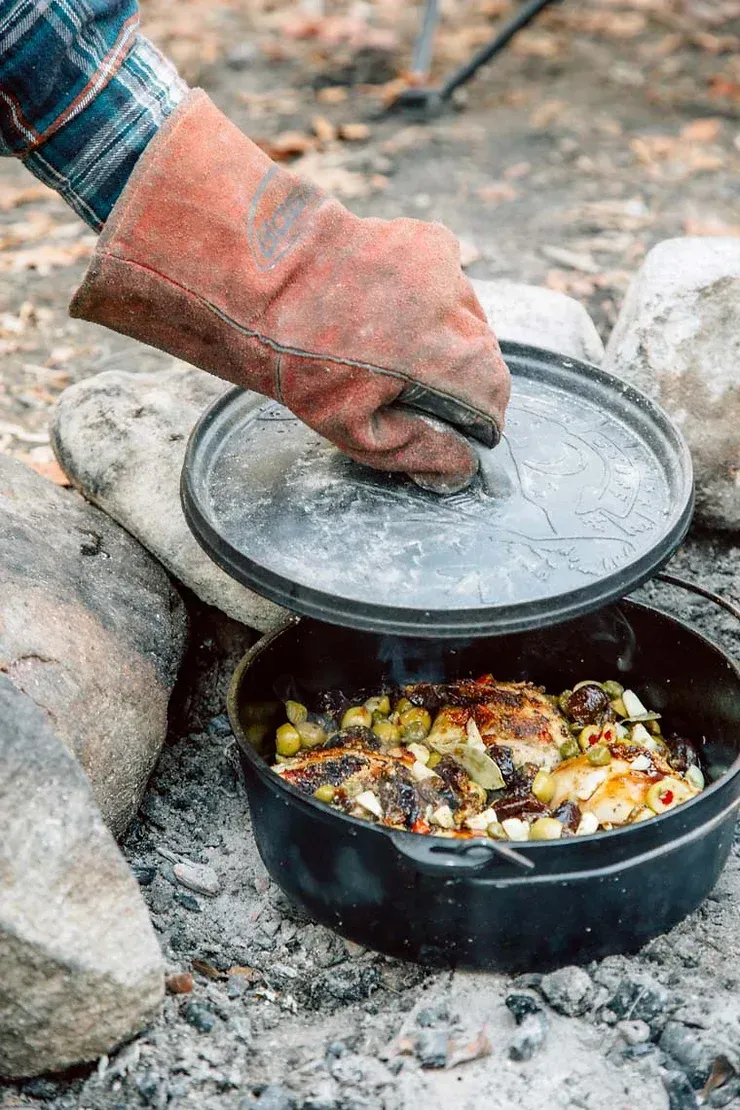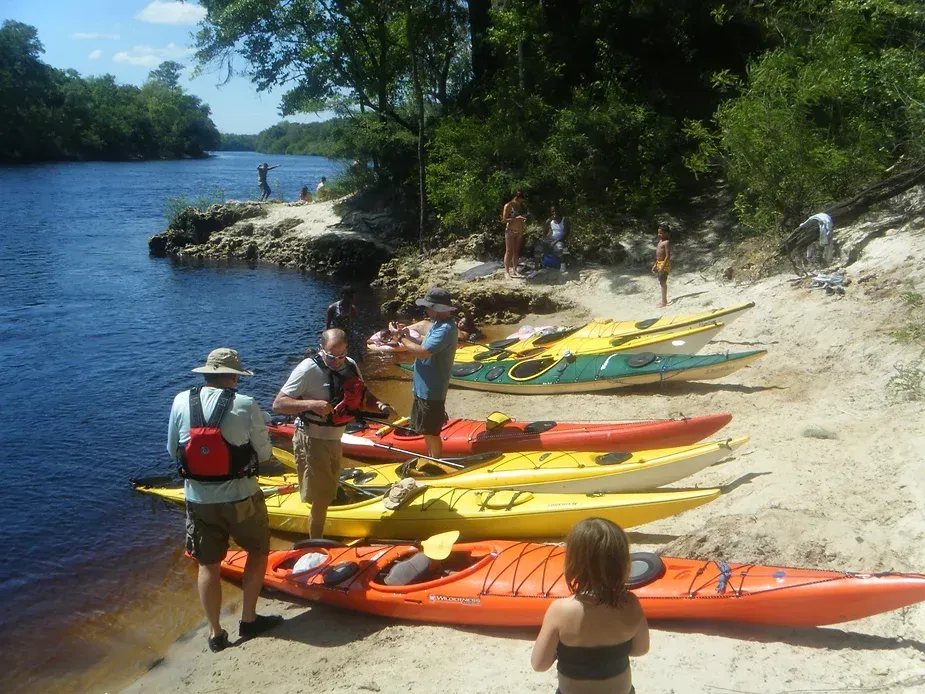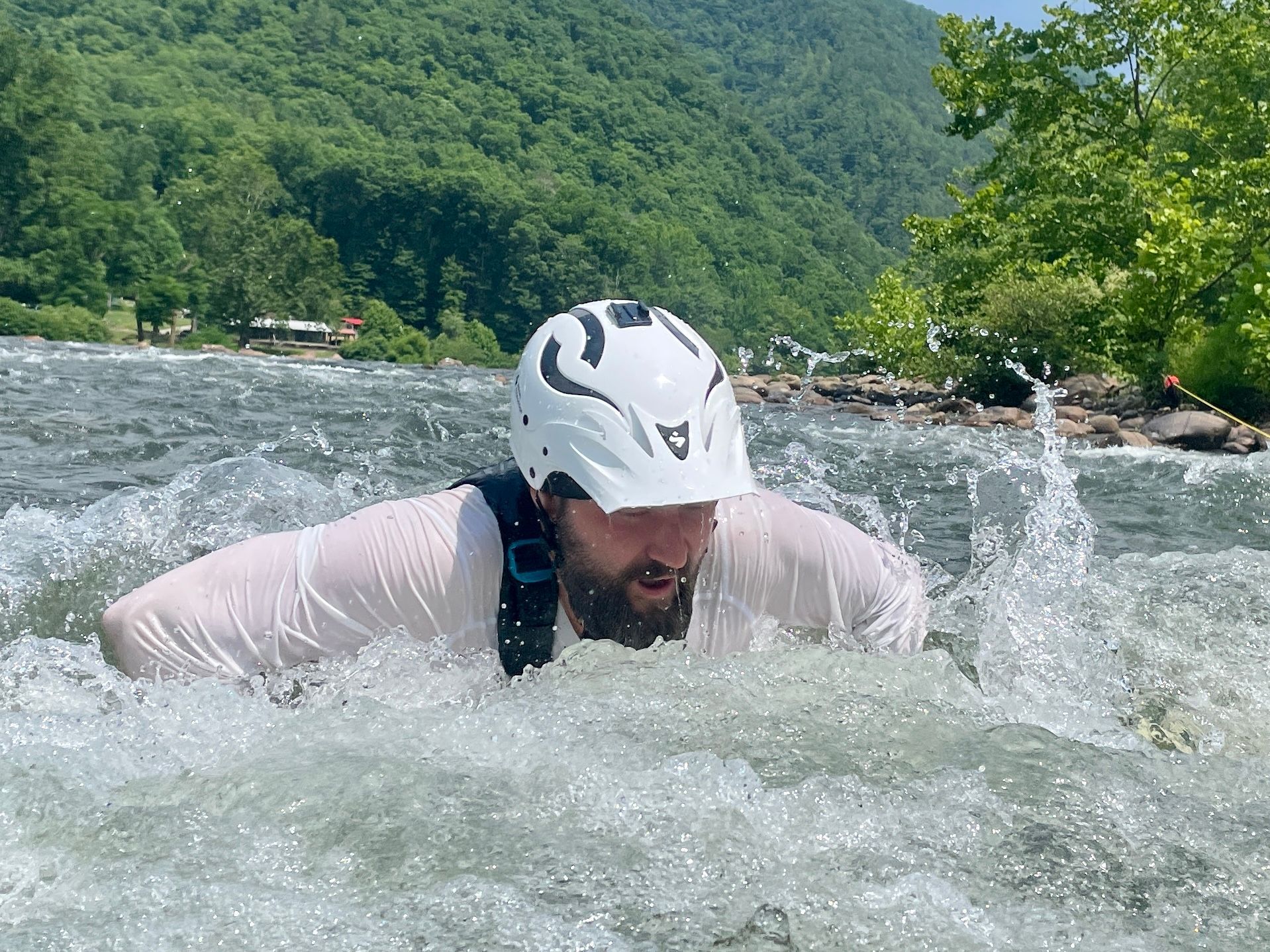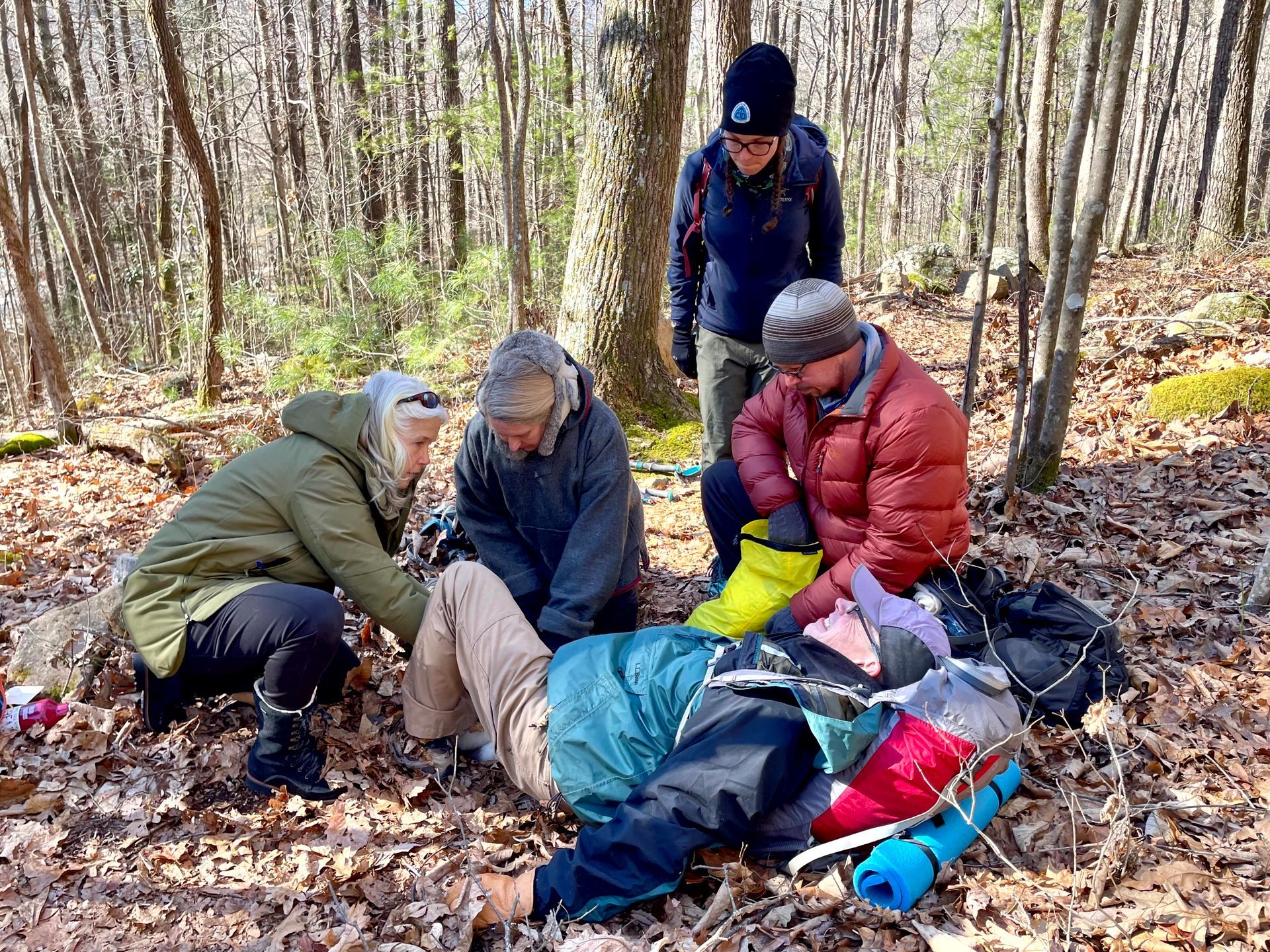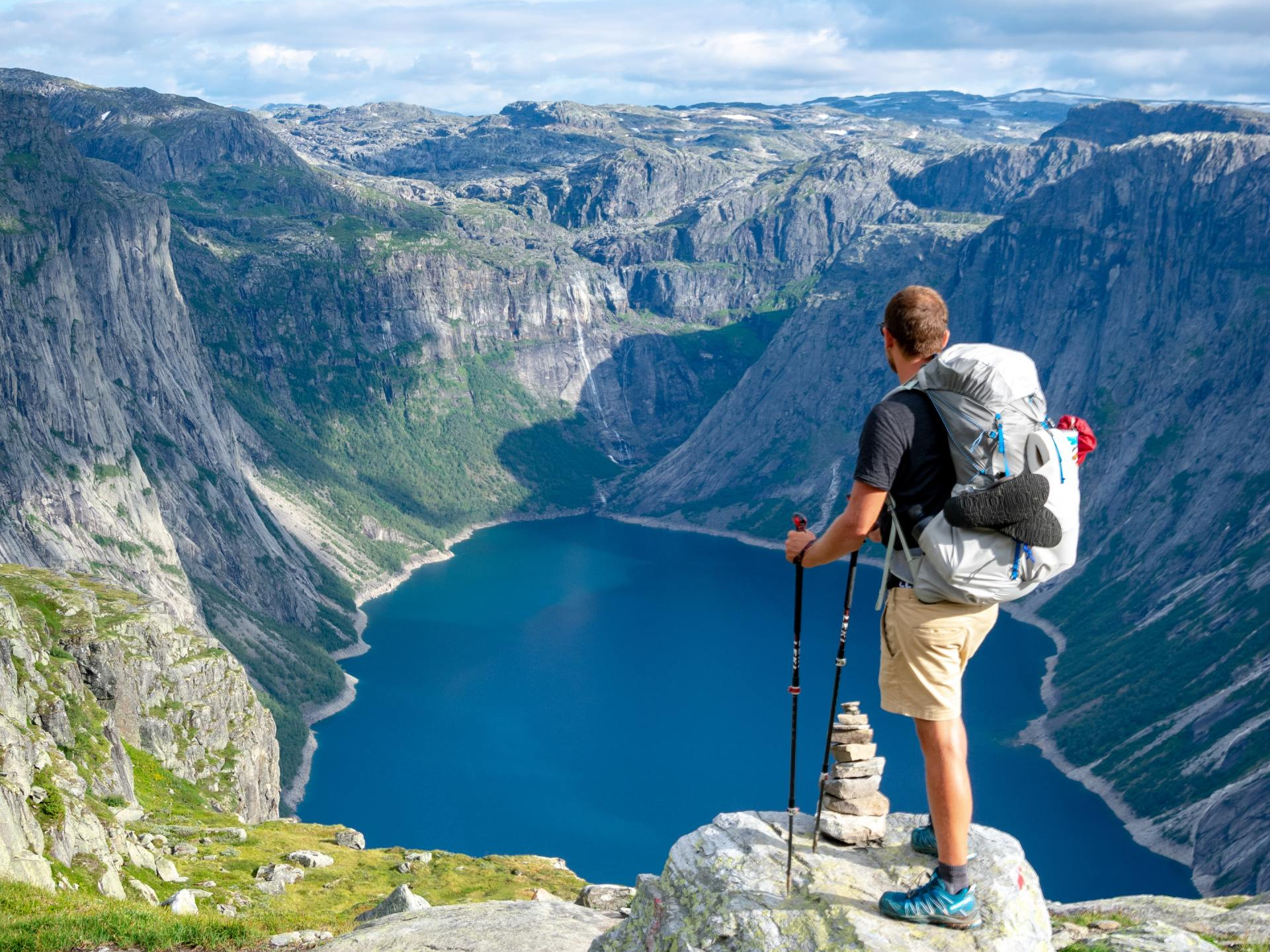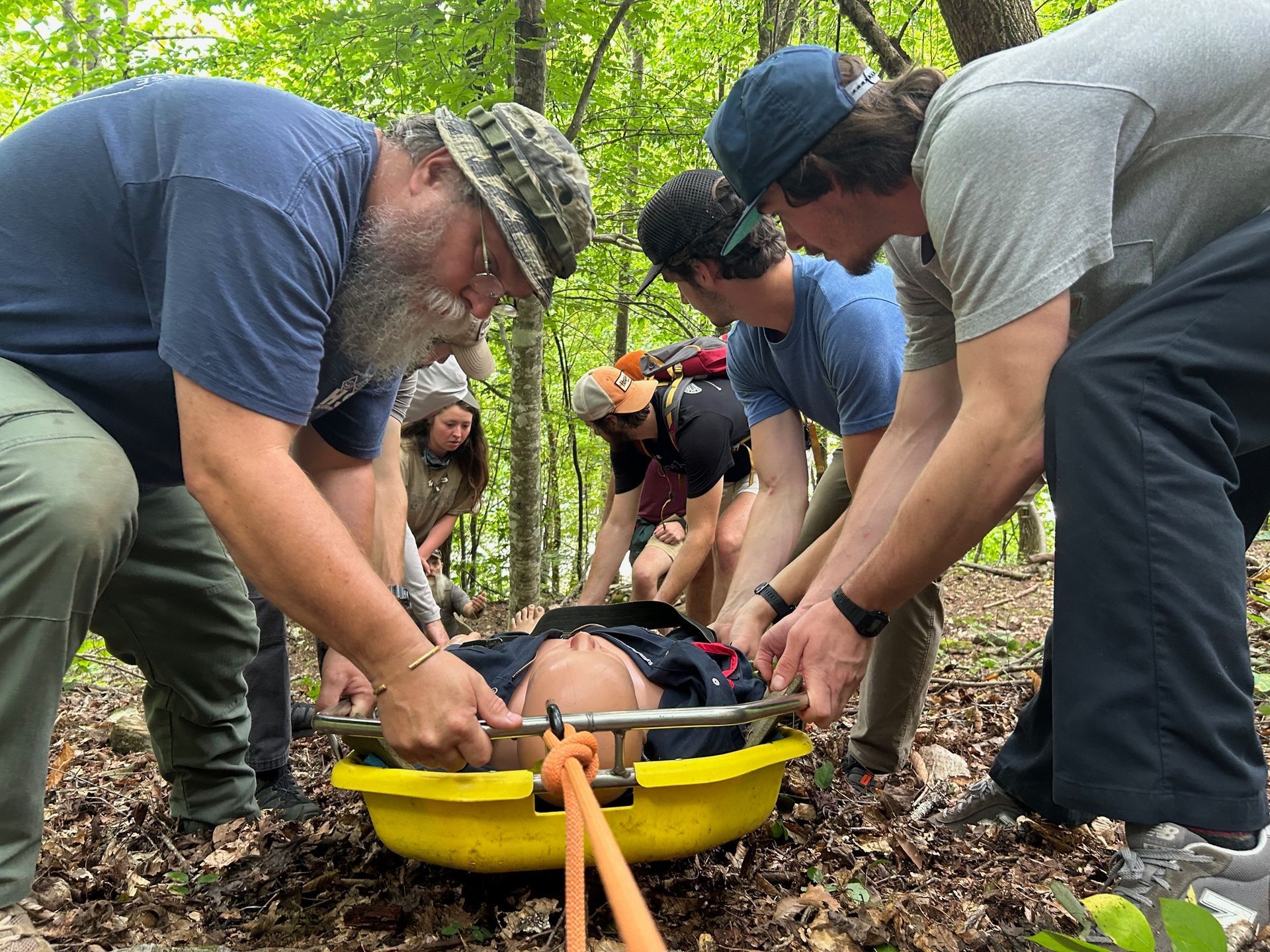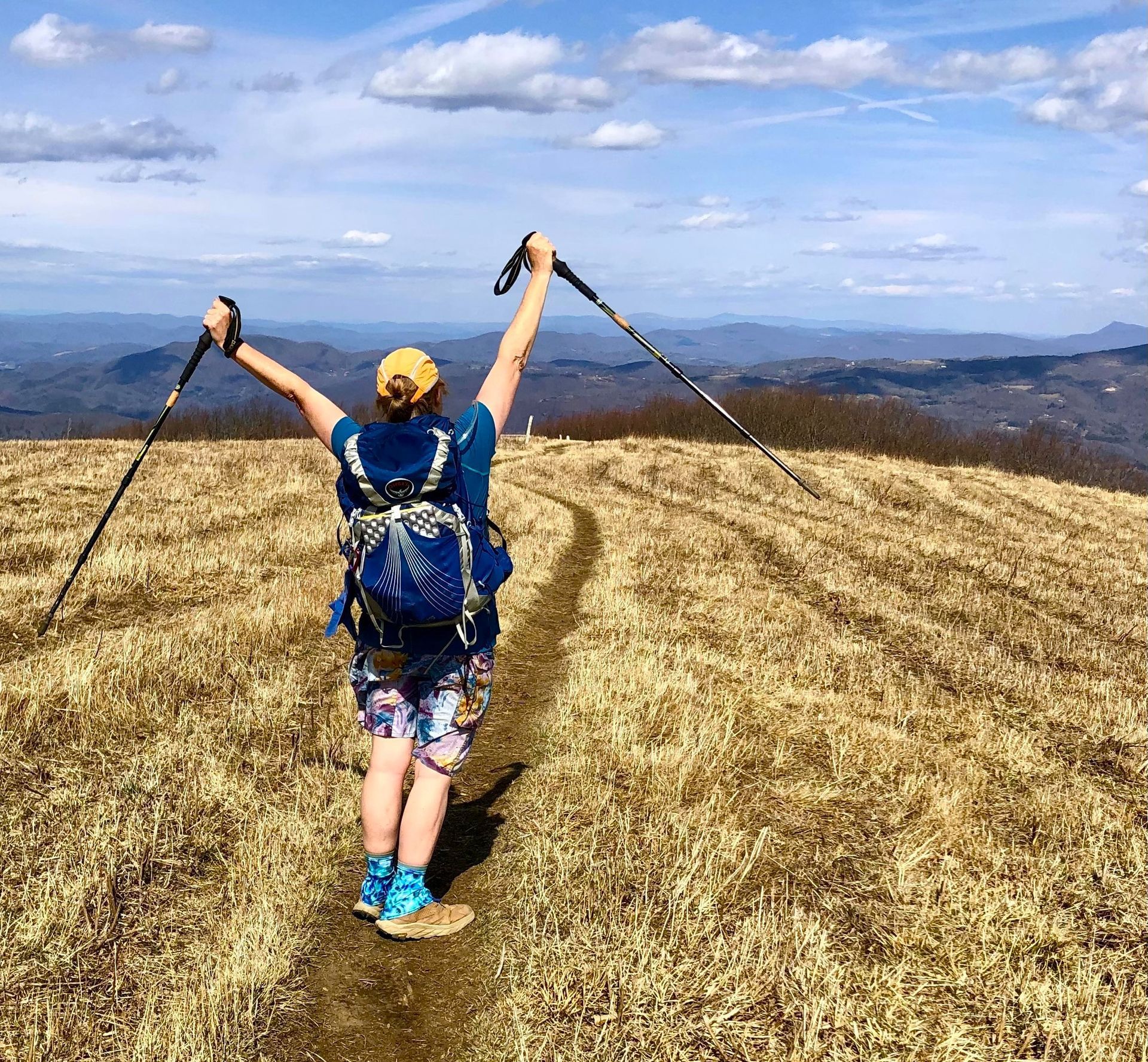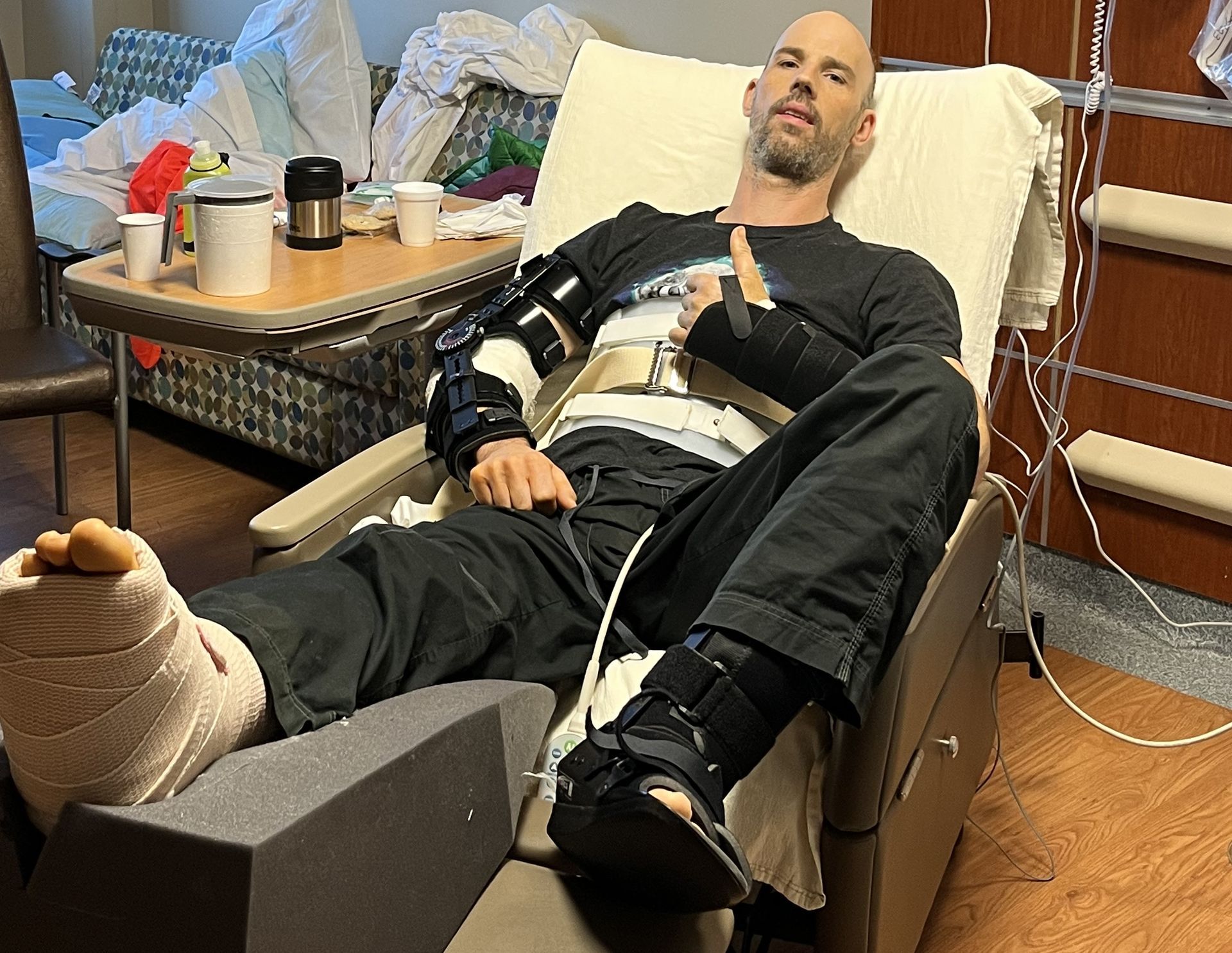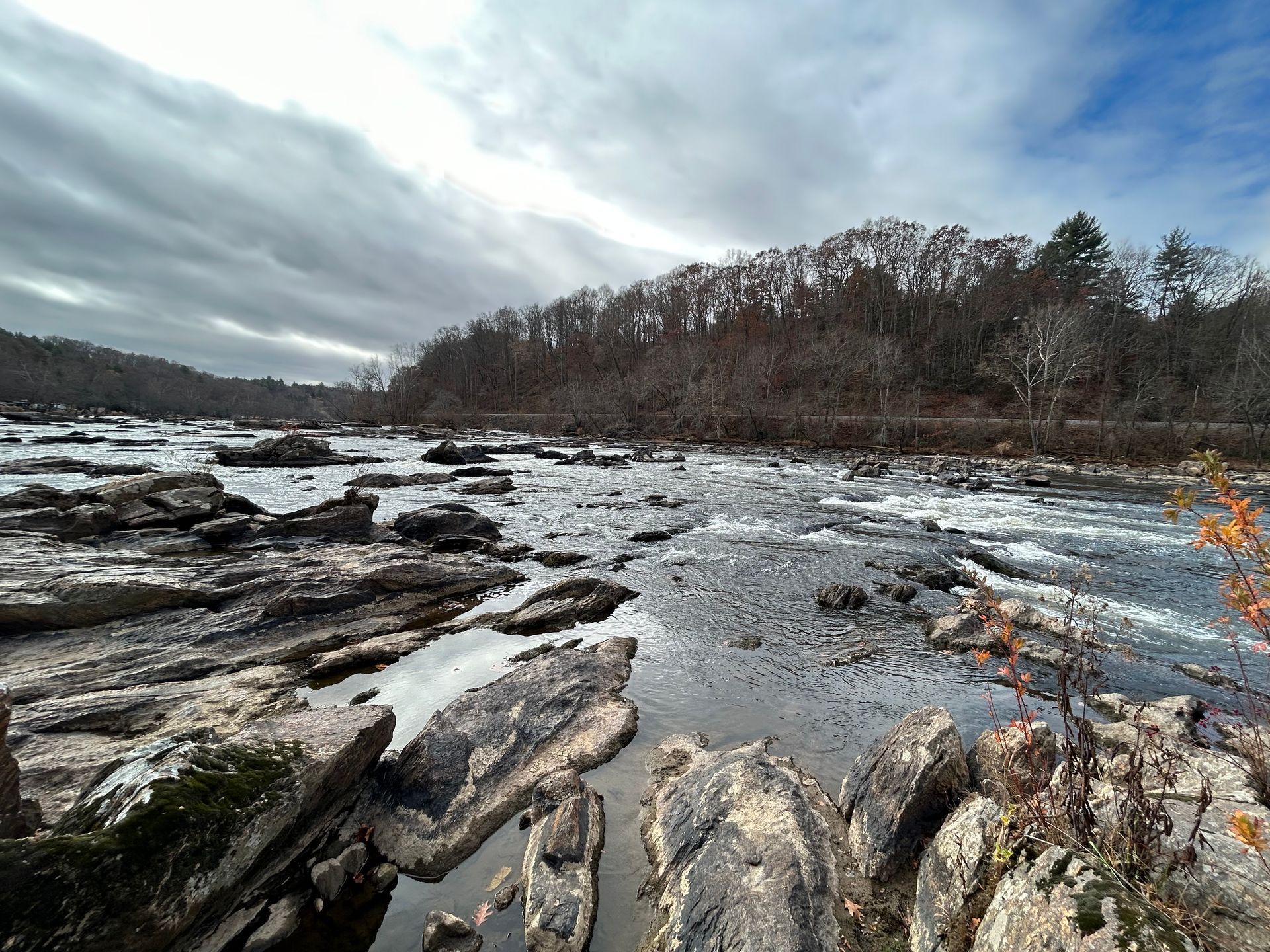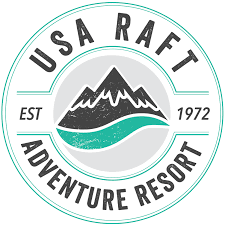Trotline Update & Call-to-Action from Scott Fisher
Over Memorial Day weekend in 2021 I was leading a kayak instructor class on the lower Nolichucky River, a popular section of river widely used by paddlers, fishermen, rafting companies, swimmers and families with children on tubes. This section is frequently busy but was even more so over the holiday weekend, with a steady stream of people enjoying themselves. With me were two of the leading water safety experts and instructor trainers in the country, Robin Pope and Tom Burroughs. Collectively, we have been teaching safety and rescue for over 60 years and have trained thousands of recreational users and professionals, including paddlers, first responders, fire fighters, veterans, park rangers and fishermen. As we worked our way downriver one of our students, David Pope, became snagged by an unmarked line that was stretched bank to bank across the river. It was anchored on river left to a limb jutting out over the river and then continued some distance before going under water, placing that part of the line above the waterline and in the main flow. The line was thicker than regular fishing line and almost impossible to see until David was floating into it. Making matters worse, as he quickly worked to free himself while the current continued to take him downstream, he saw a large heavy-duty fishhook come in direct contact with the front of his life jacket. It’s only through the quick actions of this skilled kayaker that he was able to avoid getting further entangled and pulled underwater. Had the hook caught him in a place other than his life jacket and impaled him there is a strong possibility that he would not be here today. Upon further examination we saw that there were at least 30 more hooks evenly spaced and secured to the main line. Most of the other hooks were underwater, with some dangerously close to the surface.
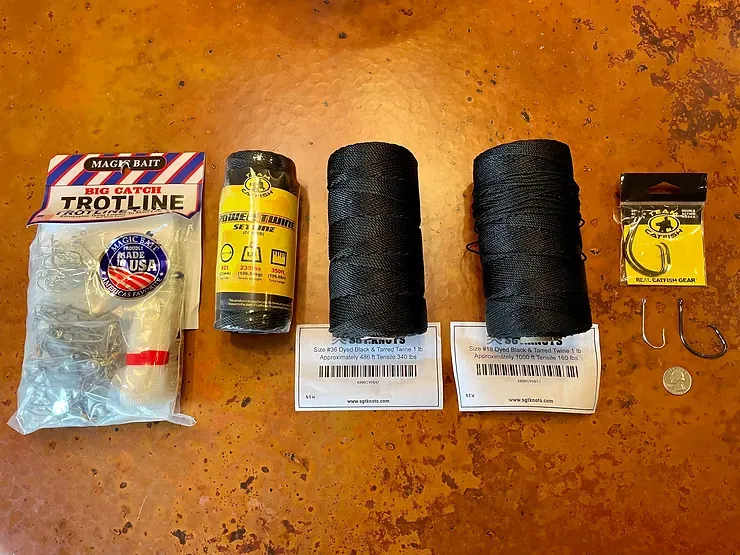
Trotline material similar to that which entangled our student
Given that the line was unmarked, which is required by law, we assumed it was abandoned and cut it where it was anchored on both banks and in the middle where it was weighted down. When confronted by the line’s owner shortly after, we explained what had happened and the risks the line created but he declined to acknowledge the hazard it posed to river users, despite having just snagged David moments before. We subsequently handed the line back to the owner intact except for the three places we cut the line and continued downriver. At the takeout we were physically blocked in by the trotline owner and others in their vehicles and confronted by the owner’s father, at which point we called in law enforcement. TWRA had jurisdiction on the matter and was, thus, called in to investigate. The TWRA agent, Bethany Watson, interviewed the trotline owner and me separately (she did not interview any of the other six eyewitnesses) and presented her report to the Assistant DA, Todd Hull, who recommended against prosecuting the case because, in his words, he couldn’t blame us for doing what we did given the circumstances. Despite this recommendation from ADA Hull, his boss, Unicoi County District Attorney Ken Baldwin, caved to pressure from the trotline owner’s family and sent the case to grand jury, resulting in me being charged with two counts of interfering with fishing and the case ultimately going to trial this past June. During the trial Judge Stacy Street granted a motion for acquittal and dismissed the case after the state presented its evidence, ruling that it had failed to meet the burden of proof, and questioned that this case should have been brought to trial in the first place. He stressed that all river users have the right to enjoy our state's waterways and that we need to find a way to do so in a manner that looks out for the interests of each other. I couldn't agree more.
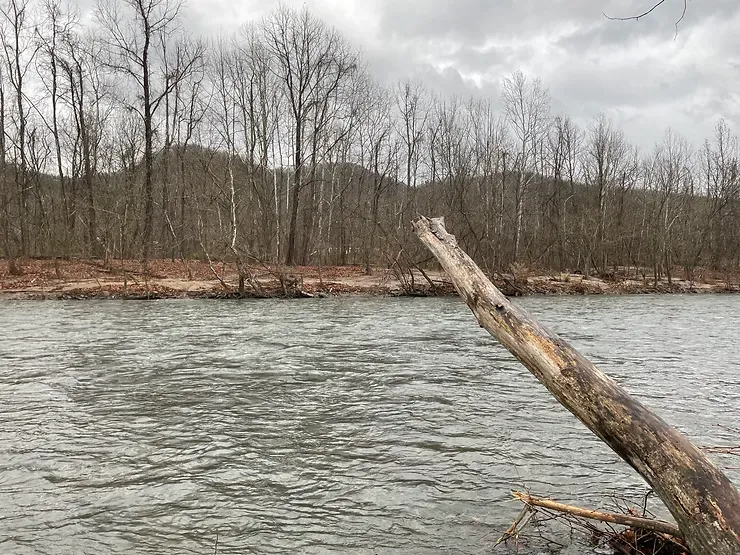
Section of river where student was entangled
I and those in our group that day are fully committed to the right of all user groups to enjoy Tennessee's waterways. We are all out there enjoying the beauty of this region doing what we love. I’ve been paddling this area for over 20 years and, outside this incident, have never had an issue with another user, including fishermen. Nor has anyone I know. When we see a fisherman, we respect their space by giving them a wide berth and paddle on. We often wave as we pass by and they frequently do the same. Occasionally we chat for a few minutes. So, any effort to portray this as part of a larger paddler vs fisherman conflict would be an unfortunate mischaracterization that benefits no one. We know issues do occasionally happen, but as someone who spends more time on our region's rivers than most, I haven't seen them. I think that, overall, here in Northeast Tennessee we've done a pretty good job - both paddlers and fishermen - of respecting one another. And, speaking for myself, I have no intention of that changing.
With that in mind, our sole concern here - and the reason we are lobbying TWRA and Tennessee legislators to revise the trotline regulations - is one of public safety. A line full of hooks stretched across a navigable waterway creates a potentially deadly hazard for all river users. We've seen that in
Brandon Archer's case in 2019 when eyewitnesses reported that he was entangled by a trotline and subsequently drowned while swimming in the Buffalo River in western Tennessee. His body was retrieved later with the line still wrapped around his leg. And we had another near miss in the incident involving our student last year. Yet some, including officials within TWRA who I have spoken with directly, have downplayed the risk, asserting that should someone be hooked by a line running either fully across or partially across a river the line would just break free. This is an assertion lacking in an understanding of the forces of moving water and simply not true. To illustrate that, I and another swiftwater rescue instructor conducted a simulation that clearly demonstrates the strength and lethality of these lines, and why an entangled or impaled victim in current is unlikely to be released. We shared this educational video with these same officials hoping it would inform their review of current trotline regs but never received a response. What I have a harder time getting my head around, though, is that these officials seemed to accept the possibility of someone getting hooked in the first place.
Trotline simulation
Tennessee fishing regulations as currently written are woefully inadequate in ensuring the most basic of trotline safety practices to minimize the likelihood of someone getting hooked or entangled by one of these lines. A solution to address these shortcomings has been presented by ACA Tennessee in the form of the Fishermen's Rights and Responsibilities Bill. Its stated purpose is to preserve the rights of Tennessee anglers, to make Tennessee waterways with trotlines as safe as possible for other recreational users, and to align Tennessee's currently threadbare trotline regulations with some of the more safety-minded practices of neighboring states. It's not long and worth a read but some of the notable revisions include requiring trotlines to be set parallel to the nearest bank, submerged at least three feet below the surface of the water, clearly marked in such a manner as to be clearly visible, and not be set in a manner that constitutes a hazard to river users.
I support these measures and hope you will too. The best thing you can do at this point - and we ask that you do it now - is to use the provided link below to contact our state legislators and let them know that you support trotline regulation revision. It's a click-through letter that only takes a couple minutes, although you are welcome to personalize it if you wish. TWRA is accepting public comments until this Fr, Sep 9, ahead of their meeting next week when they will present their proposed 2023 regulations to the Fish & Wildlife Commission. By submitting our letters of support, we will be letting state legislators and TWRA know that the time is now to do the right thing and make these changes in the interest of the safety and welfare of those who spend time on Tennessee's waterways. I have seen more people on the river over the last two years - paddlers, swimmers, kayak fishermen and especially families on tubes - than any time in my 20 years paddling these rivers. It will take just one 7-year-old girl or boy to get hooked in the foot, leg, arm or face and then get pulled underwater and drowned to make folks wonder how such a tragedy could have happened. But it will be too late. The damage will be done and a family will be missing a loved one when it could have been prevented. If nothing else, we should care about the safety and well-being of our community and look out for each other. Public safety is the driver here and TWRA would benefit the community at large by making sure that their regulations truly represent the broader public good.
Thank you to everyone who has supported this cause over the last year. There have been too many of you to list but know how much you are appreciated. Please help us continue the effort to change Tennessee's trotline laws by clicking below and asking all those you know to do the same by Fri, Sep 9.
Scott Fisher
Scott Fisher is the founder of the Nolichucky Outdoor Learning Institute (NOLI) and carries advanced instructor certifications in whitewater kayaking and swiftwater rescue.

